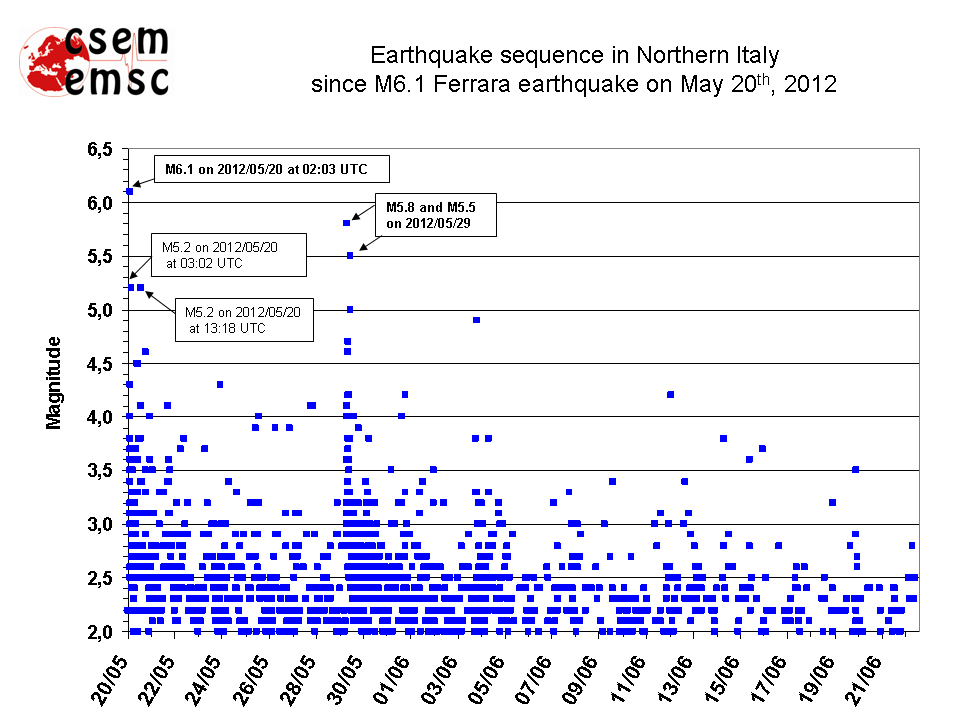The INGV has published some new data on the earthquake that hit Italy in the morning of 20 May, 2012 and caused damages and casualties. Peak ground accelerations (PGA) reached 28%g in the epicentral area. This is not unusual for an event of that size. Peak ground velocities (PGV) were as high as 20 cm/s. The spectral response is more interesting. The 3s period response is 1.5%g only, at 1s period the area encountered 18%g, and for the 0.3s period the values reached 49%g, which is quite a lot for a Mw6.1 quake. However, the longer periods tend to be more dangerous for buildings. One problem with the PGA maps is that they are computed for bedrock. To correct this value for sediments in the subsurface, the so-called V30 value is used – the average seismic shear wave velocity in the uppermost 30 m of the underground. In the Po Plain, sediment thickness is huge and reaches to several hundreds of meters, even more in some areas. This is what controls the site response. Therefore, our maps must be wrong in a certain range.

The 0.3 period spectral response reached up to 49%g. Data and image courtesy of INGV (http://shakemap.rm.ingv.it/shake/8222913230/download/psa03.jpg)
Felt reports came in from the entire Po Plain and northern Italy:

Felt reports. Data and image courtesy of http://www.haisentitoilterremoto.it/
The earthquake was registered not only in Italy by seismographs, but all around Europe and at most stations worldwide. Leipzig University’s observatory at the Collm allows to access real-time data. The Italy Earthquake is very prominent in their records:

The earthquake as registered at Leipzig University's Collm observatory. Data and image courtesy of Leipzig University (http://linap6.geo.uni-leipzig.de/sxweb/).
EMSC published these data on the aftershock sequence:

Meanwhile, The Guardian citet Gian Vito Graziano from the Italian Council of Geologists saying “The area was not considered dangerous until 2004 when classifications were changed to reflect scientific findings – in this case the fractures in the Apennines – instead of history. Sunday proved the new classification right.”
Also, some witness reports mentioned changes in the groundwater table which could be a useful information to evaluate the earthquake effects in terms of the ESI 2007 intensity scale.



No Comments
No comments yet.